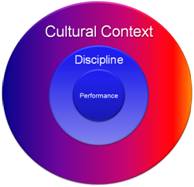Our clients say, “To deliver our strategy & performance we need culture change”. We interviewed Chief Executives who improved organisational performance by changing the culture. They say, ‘Strategy gets eaten by culture’ is just an excuse for having a poor culture change strategy. Learn how they do it and you can too…
Contents:
- Introducing The Culture Change Zone: Modelling the approach of successful Chief Executives
- Dispelling popular myths about culture change
- The culture change approach of successful Chief Executives: Seven interacting parts
- The underlying thinking of Chief Executives
- Culture change and strategy in action
- Culture change: Why the culture of performance and performance management needs fixing
- Paradigm shifts: How the way we think about our people and organisations continues to change.
1) The Culture Change Zone: modelling the approach of successful Chief Executives
Over the years we have helped many clients bring about culture change in their organisations. However, we realised that it was not really us that was causing success. (Yes that is quite an admission as a management consultant). We realised that were most successful when we were helping Chief Executives who were serious about change and had a systematic approach. They had a pattern and approach to culture change. How they thought about culture change was more subtle that many of the simple change approaches.
As a result our Chief Executive, Phil Jones, decided to find out how these Chief Executives were thinking about change and what they were doing to create change. So I sought out and interviewed around twenty Chief Executives who fundamentally changed the performance of their organisations by changing the organisation’s behaviours and culture. The interviewees were carefully selected. This was not simply about changing the performance or results: the interviewed executive must have set out to explicitly change the organisation’s culture for the better.
Those interviews have been extremely revealing. They have turned around failing organisations ranging from manufacturing and service companies to hospitals and utilities. There is a theme of humanity, despite having to take hard measures, sometimes making people redundant and sacking others. They all changed the culture and the results. They all tackled the deeply embedded learnt behaviours creating a new, more productive culture, as well as turning around their organisations.
“The Executives interviewed for this research must have set out to explicitly change the organisation’s culture and behaviours to improve performance.”
What follows is the results of those interviews, combined with our experience in practice. From this work you can understand the underlying thinking of these Chief Executives and, if you wish, model their behaviour and approach.
Top of page or Back to contents
2) Dispelling myths about culture change
There are a lot of myths around culture change. Most claiming that people do not like change, that culture change is difficult or that strategy gets eaten by culture. We believe these myths are put about by people who do not understand how to manage change. Here are two articles that dispel such myths.

- Myth 1: People don’t like change. Oh yes they do. In reality people do like change: change they can control and feel a part of. This is a way to blame others for the failure to manage change.
- Myth 2: Culture eats strategy for breakfast: . Only if you don’t have a decent strategy for culture change.
- Both of these are simply excuses: blaming others for their own failure to have a proper strategy for managing and creating change.
It is important to dispel these myths. There are plenty of Chief Executives who have changed the culture of their organisations, and their people liked the change.
Top of page or Back to contents
3) The overall culture change approach of successful Chief Executives: seven interacting parts
This is how they approach organisational culture and behaviour change, with seven interacting components:
- Have a grip on what is going on
- Create a compelling imperative for change: emotional and rationale
- Focus effort. Choose which battles to fight
- Choose a destination or a journey – either work. Exemplify the new behaviours and values along the way
- Start the bus moving. Encourage those that get on. Accept that some won’t. Explicitly remove the blockers.
- Address the Deeply Embedded Learnt Behaviours (DELBs). Give permission to change, to try, and to learn new behaviours.
- Create a rhythm of change, with clear symbols that change has happened.
We characterised the approach as “It’s about behaviours, stupid!”. It has various themes that include obliquity, a rhythm of change, permissions, releasing butterflies from jars, and creating a compelling imperative. One interviewee characterised the way of thinking as, “This is how we should manage in the second decade of the 21st century”
It is their thinking and approach that we have incorporated into, and alongside, our fourth generation strategic balanced scorecard approach. Some aspects were already familiar to us and we have used them over the years to help clients bring about significant cultural change. Other parts have clarified and enhanced our approach. In fact, it is such a significant shift of thinking and emphasis that it forms the Transformation Module of the Excitant Fourth Generation Strategic Balanced Scorecard approach.
Top of page or Back to contents
Some clients quotes about how we help them create change:
“This is how we should manage in the second decade of the 21st century”
“The amount of change you have helped us create in the organisation has been terrific. There has been an ingrained culture, a way of working. It is pretty impressive to be changing that in a 5 month project. We have not embedded things, in the same way, before.” Trevor Gibson, Director Environmental Services, Peterborough City Council
Top of page or Back to contents
4) Underlying thinking and approach

- A very human approach: They care about their people, even the ones they had to let go.
- They treat culture as a set of deeply embedded learnt behaviours (DELBs).
- They provide a compelling imperative for change that give people the choice to change (Not burning platforms)
- Giving people permission to try, changing the boundaries and learn
- They socialise the strategy (See Communicating & socialising strategy – an executive’s guide)
- Norms of behaviour – peer pressure, expectations and cultural norms.
- Breaking down silos to create a greater sense of unity across the organisation.
- Removing the blockers & bullies: freeing up the butterflies
- They make it clear that they are serious about change
- A series of tangible improvements, step by step, go up to make the big change project
Top of page or Back to contents
5) Culture change and strategy in action
Here are some more articles on aspects of how we see culture, and culture change
- What do we mean by “A culture of performance”
- Social systems
- What is the Dark Matter of performance and success in an organisation?
- Upside down organisation charts – a different approach to leadership
- Forget business models – what is your people model?
- Why reorganisations fail – they miss the underlying issue in an organisation
- Purpose and meaning at work: understanding the importance difference for people
“Even five years on, we are still using the approach you helped us develop. It has been central to building our capability as a department and focusing on delivery to our clients.” Mike Martin, Managing Director, Anglian Water Technical Services
6) Culture change in Fourth Generation Strategic Balanced Scorecards
One thing that has particularly annoyed us over the years is how culture change is ignored when people tackle issues of performance management. For us, if you are seeking to introduce, or alter, a performance management solution you must consider :
- The cultural implications of the change
- The culture of performance that you want to achieve

Any introduction of a different performance management approach will involve some degree of culture change. That is absolutely clear to us. yet, so often I hear about organisations that have introduced balanced scorecards or new performance management approaches, without any thought to the cultural and behavioural implications. There are myths of high percentages of balanced scorecard implementations failing. Yet when we looked at the original research, rather than the headiness, it was clear the original research was about more general projects that lacked any proper implementation plans or cultural considerations. In other words, bad projects with poor change management will fail – that is no surprise. Such problems are independent of the projects objectives or the technology used. Treating any balanced scorecard or performance management project as social systems rather than technical ones, undermines such simplistic approaches and is far more likely to ensure success.
A big danger of this is that many performance management approaches assume a culture of performance. For instance, “Measures motivate”, “What gets measured gets managed” and “What gets incentivised gets managed first.” Of course, there are plenty of examples where these cultural assumptions have led to dysfunctional behaviours, such as “Measure mania”, “the tyranny of targets” and “feeding the beast”.
In contrast, many organisations operate a more subtle and appropriate culture of performance. One that suits their particular management styles. This culture of performance wraps around the discipline of performance. We also have a view of an ideal culture of performance. A view quite different from the assumed styles of many simplistic performance management and balanced scorecard implementations.
“There has been an ingrained culture, a way of working. It is pretty impressive to be changing that in such a short project.” Graeme Law, Environmental Services Manager, Peterborough City Council
Top of page or Back to contents
7) Paradigm shifts that affect our organisations and our approach to culture and behaviour change
We are noticing changes in the environment we work in, that affect how we think about culture, culture change and our relationship with our employees and people who work with us. These include:
- The changing nature of work
- The changing nature of the way we engage, and employ people
- Changing expectations of work
We explore these changes and their implications for organisational culture, in “The paradigm shift zone”
Our approach: A consistent approach towards behavioural change
The pattern and approach towards behavioural change that these Chief Executives described, helped us create a clear model for how these Chief Executives thought about and implemented change.
Any attempt to change performance, probably requires some behavioural change. Changes to the systems of management or management style require a change in culture and behaviours.
We now check with clients to ensure they are serious about change. if they are not, we will decline to work with them
Persistent solutions for our clients
This is not a one-off process. We pride ourselves on building your skills and capabilities, so you can maintain and run the approach yourselves.
Visiting Anglian Water 5 years after our initial work they still had their strategy map on the wall: refined and updated, but recognisably the same approach, updated as their strategy had been updated. Similarly with the IT department of OCBC, the Singapore Bank. Talking to them again several years later, they acknowledged how important our work was to the successful implementation of their IT Strategy.
Does your strategy rely on changing behaviours to get results?
Are you looking for ways to ensure that your strategy delivers, by addressing those deeply embedded learnt behaviours? Then, to explore how we might help, simply contact us
Further Topics that may help you
This page, and all the articles associated with it, were created to help people better understand this topic. Our work with clients has led us to publish nearly 400 articles & case studies, divided into closely related topics (Zones).
Why so many articles? We have a simple view: that sharing our experiences, explaining many of topics clearly, and educating people is a good thing. That is why we give so much material away. It might not bring in consultancy engagements, but it helps people avoid mistakes, and that does matter. If you have found this useful, have a browse through our other zones:
- Strategy: Our introduction to understanding strategy, its language, strategic thinking, development and making strategy happen. The Strategy Zone. Supported by four further zones:
- Make good decisions, execute them well and learn quickly in The Decision Improvement Zone.
- Manage Culture change: Does your strategy require cultural and behavioural change? Learn how in The Culture & Behaviour Change Zone.
- Communicating Strategy: Want to communicate and socialise your strategy better? The Communicating & Socialising Strategy Zone
- The 4G Strategic Balanced Scorecard: An approach to managing strategy, our organisations and our people, designed for today’s challenging organisational context The 4G Strategic Balanced Scorecard Zone
- Wider issues of Performance Management and earlier Balanced Scorecard approaches:
- Performance Management: Diagnose problems in various types of performance management systems, and understand how our beliefs influence our approach in The Performance Management Zone
- Modern Balanced Scorecards : Understand how earlier generations of balanced scorecards should work, (from someone who worked with Norton & Kaplan) The Modern Balanced Scorecard Zone.
- Paradigm Shift: The context of our organisations continues to change, affecting how we think about our organisations, and how we manage. Explore the shifts and implications, in The Paradigm Shift Zone.
Of course, there is another way to get help: by using the Contact Us form below, or give us a call.

